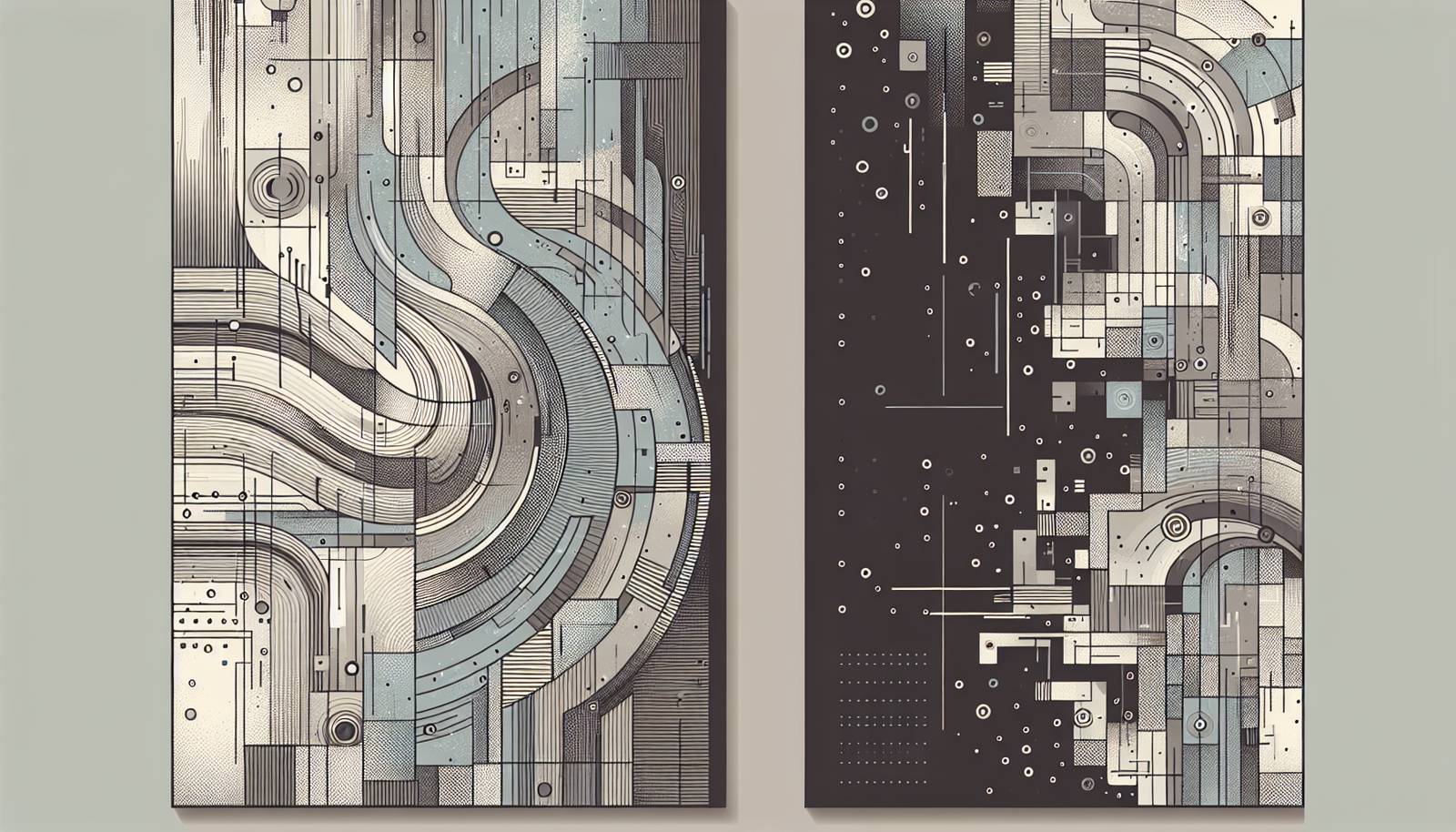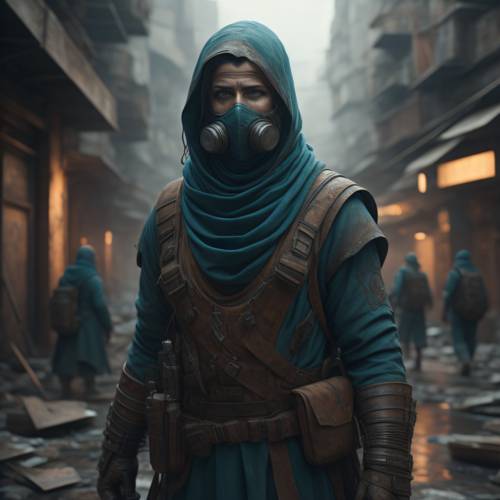
FAQ About The Impact of Dystopian Themes in Contemporary Art and Media

What is a dystopian theme in the context of art and media?
A dystopian theme in art and media refers to the depiction of an imagined society that is undesirable or frightening. These themes often explore worlds where oppressive regimes, environmental disasters, or technological control have created despair and oppression. They are used to critique current real-life societal, political, or technological issues.

How do dystopian themes reflect societal anxieties?
Dystopian themes often mirror the anxieties and fears prevalent in society. By exaggerating the potential consequences of current trends, such as surveillance, climate change, or loss of individual freedoms, they provoke reflection and discussion on the social and political directions humanity is taking.

Why are dystopian themes popular in contemporary media?
Dystopian themes are popular because they provide a compelling way to explore complex socio-political issues and human morality. They challenge audiences to question the status quo and consider future consequences of current actions, resonating with audiences who see similarities between fictional dystopias and real-world events.

What is the historical significance of dystopian art and media?
Dystopian narratives have a rich history, often emerging during times of social upheaval and uncertainty. They serve as a form of protest and commentary on the issues of the time, such as the aftermath of wars, political revolutions, or the rise of oppressive regimes, highlighting human rights concerns and the importance of vigilance against authoritarianism.

Can you give examples of famous dystopian art or media from recent years?
Recent examples of dystopian art and media include films like "The Hunger Games", TV series such as "Black Mirror", and books like Margaret Atwood's "The Testaments". These works explore themes of surveillance, government control, and societal collapse, often reflecting current global concerns.

How do dystopian themes challenge cultural perspectives?
Dystopian themes challenge cultural perspectives by pushing individuals to question established norms and envision the extreme outcomes of current societal trends. They provoke thought about issues such as privacy, freedom, and human rights, encouraging societal reflection and debate.

What role do dystopian themes play in literature?
In literature, dystopian themes are often used to explore the depths of human experience under oppressive conditions. They provide a canvas for authors to speculate on the consequences of policy decisions and cultural shifts, often predicting how they might lead to dehumanizing life conditions if left unchecked.

How does contemporary art utilize dystopian themes?
Contemporary art employs dystopian themes to critique current societal issues through visual symbols, imagery, and concepts that evoke a future shaped by fear and control. Artists use this genre to express their warnings and hopes, engaging viewers in conversations about the direction of human society.

Is there a difference between dystopian and post-apocalyptic themes?
Yes, there is a difference. While both dystopian and post-apocalyptic themes deal with negative future scenarios, dystopian narratives focus on structured societies that have gone wrong under oppressive regimes, whereas post-apocalyptic themes explore the aftermath of a catastrophic event leading to societal collapse.

What are some common elements in dystopian media?
Common elements of dystopian media include totalitarian regimes, environmental degradation, dehumanization, surveillance, technological control, loss of individual freedom, and the portrayal of a society oppressed by a ruling class or government. These elements create an atmosphere of fear and control.

How has the portrayal of dystopian themes changed over time?
The portrayal of dystopian themes has evolved with societal changes and technological advancements. Early dystopian works were more focused on political oppression, while contemporary works often incorporate themes like digital surveillance and biotechnology, reflecting new societal concerns.

In what ways are dystopian narratives reflective of current technological trends?
Dystopian narratives often reflect current technological trends by exploring the potential dark sides of technological advancements such as AI, surveillance technologies, and bioengineering. These stories speculate on how these technologies could impact privacy, human identity, and power dynamics.

What impact do dystopian films have on viewers' perceptions of society?
Dystopian films can significantly impact viewers by illustrating exaggerated consequences of current societal trends, prompting reflection on the real-life implications of such trends. They may alter perceptions by highlighting the potential for societal collapse and the importance of maintaining vigilance and awareness.

Are dystopian themes only present in fiction?
No, dystopian themes are not confined to fiction. They have also found expression in non-fiction formats, such as documentaries and critical essays, which explore real-world systems and policies through a dystopian lens, encouraging critical evaluation of current societal constructs.

How can dystopian themes be used for educational purposes?
Dystopian themes can be used in education to provoke critical thinking and discussion about ethics, governance, and human rights. By analyzing dystopian narratives, students can explore complex societal issues, compare them to current events, and develop solutions for preventing dystopian scenarios.

What are the artistic techniques used to convey dystopian themes?
Artists use various techniques to convey dystopian themes, including dark and monochromatic color schemes, stark imagery, symbolism, and abstraction. These elements help evoke emotions of fear and urgency, allowing audiences to grasp the critique of current societal trajectories.

How does the theme of power dynamics play out in dystopian art and media?
Power dynamics are a central theme in dystopian art and media, where authoritarian figures often wield control over the populace. These narratives explore the struggle between oppression and resistance, illustrating the impact of absolute power on freedom, individuality, and society at large.

What role does hope play in dystopian narratives?
While dystopian narratives primarily focus on themes of oppression and despair, they often contain undercurrents of hope, portraying characters or groups struggling for change or seeking to restore humanity. This element of hope can inspire audiences to reflect on real-world challenges and the resilience needed to overcome them.

Can dystopian themes influence cultural change?
Dystopian themes have the potential to influence cultural change by raising awareness about societal issues and prompting reflection and dialogue. By imagining extreme scenarios, they challenge audiences to consider the long-term consequences of current actions, potentially motivating change to avoid the depicted futures.

How do dystopian themes address environmental concerns?
Dystopian themes frequently tackle environmental concerns by envisioning scenarios where ecological disasters have led to societal collapse or increased authoritarian governance due to resource scarcity. These themes highlight the importance of environmental stewardship and the dangers of neglecting ecological sustainability.
